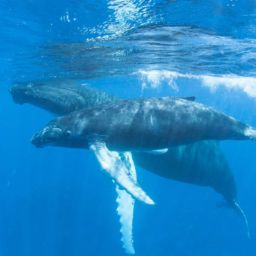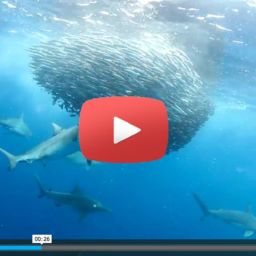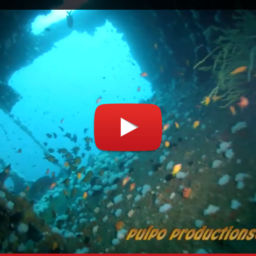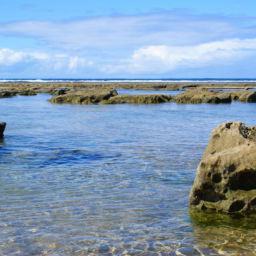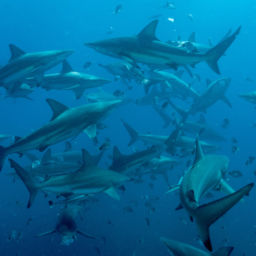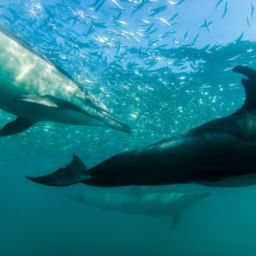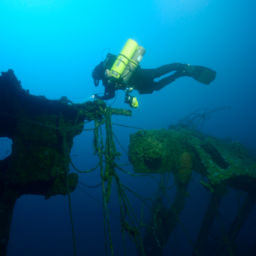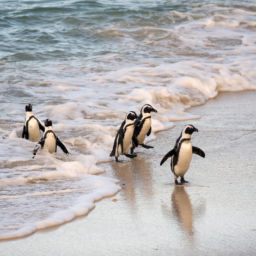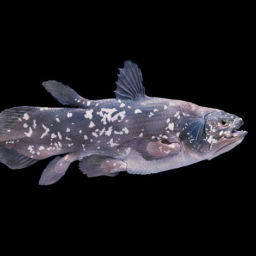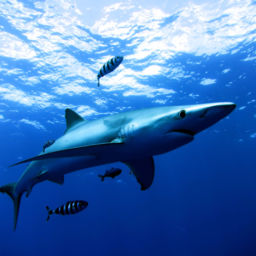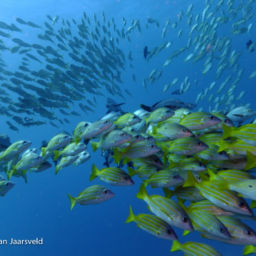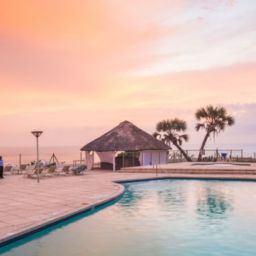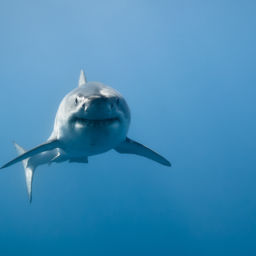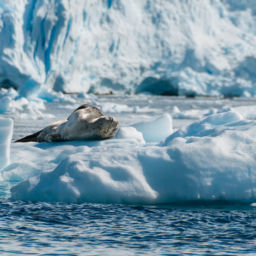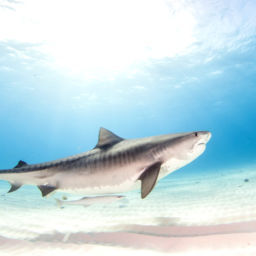But there’s another, less well-known run: the spawning of the chokka that takes place in the cool waters of the Eastern Cape each winter. “Chokka” is the South African name for the loligo reynaudii squid, more commonly known to Europeans as calamari. Chokka fishing is the lifeblood of many Eastern Cape towns, supporting an industry that provides an income for over 2,400 South African fishermen. At night, the horizons of coastal towns like Jeffrey’s Bay and Cape St. Francis light up like a fairground as chokka boats use high-powered spotlights to attract the squid to their lines, save for five weeks in October and November when the industry shuts down to allow the squid to spawn in peace. This period of abstinence makes for an excellent opportunity to dive with the squid, and to see them at their most active. The mating and spawning rituals of the chokka make for an impressive spectacle, and those who witness it can also observe the many predators that follow in the squids’ wake. This year, the chokka boats of the Eastern Cape have agreed to a voluntary fishing hiatus in order to allow squid stocks to recover, making this winter a better time than ever to follow the trail of South Africa’s completely unique, utterly fascinating chokka run.
The loligo reynaudii squid can grow up to 16 inches in length, and can be found anywhere from sea level to depths of over 660 feet. Each year, it comes inshore to coastal waters to mate and spawn, and the picturesque town of Cape St. Francis is one of the best bases for seeing the squid in action. The waters of the Eastern Cape are cold, even in the South African summer, with temperatures frequently falling as low as 50 F (10C). To dive the chokka run, you’ll either need a drysuit or a thick wetsuit with a hood, gloves and booties — even then, the frigid temperatures can be a bit of a shock to the system for those used to warmer climes. However, the sights of the chokka run are well worth the discomfort of cold water and often-limited visibility. Although the reefs of Cape St. Francis are a far cry from the tropical soft-coral gardens found in warmer water, they do offer a profusion of purple and yellow coral growth. The greenness of the water contrasts wonderfully with the beds of squid eggs, which are lusciously plump and luminously orange. Like fleshy fingers, the eggs wave as one single mass with the constant movement of the surge, spreading carpet-like across the seafloor. Amazingly, the female squid lays each egg individually, the product of a mating ritual that is simultaneously chaotic and strangely poetic.
The squid, when they arrive at their spawning grounds, appear as translucent diamond shapes in the gloom, their disproportionately large eyes reflecting silver shards as they flit in and out of the torch light. As they jettison through the water, their bodies pulsate with shifting waves of color. After observing them for a while, different methods of copulation become apparent. Large consort males escort some of the female squid to the spawning site, where they engage in parallel mating via spermatophores located in the males’ tentacles; “sneaker” males will also approach unsuspecting females and rapidly impregnate them through head-to-head mating. Sometimes, male squid will fight over the females, usually by engaging in antagonistic visual displays, sometimes by beating one another with their fins. Cannibalism amongst chokka is not uncommon, with several individuals often fighting over the corpse of another. Once copulation has taken place, the female squid descend onto the seafloor to add their eggs to the waiting clutch, after which they have no further contact with their young.
The abundance of squid in the area at this time of year attracts several exciting predators to the coastal waters of Cape St. Francis as well, including ragged-tooth, or sand-tiger, sharks, short-tail stingrays and diamond rays. Divers are also likely to encounter Cape fur seals in predatory mode, and the endearingly named pyjama shark, a small, benthic shark species named for the white and black stripes that line its body. The pyjama sharks have learned to hide amidst the waving egg beds, and to launch an ambush attack on the female chokka as they descend towards them.
The chokka run may not offer the same adrenalin rush as the sardine run, and like all natural phenomena, it can’t be precisely planned or predicted. However, for its uniqueness, and for its otherworldly beauty, it undoubtedly deserves to be recognized as yet another of South Africa’s many natural wonders.


